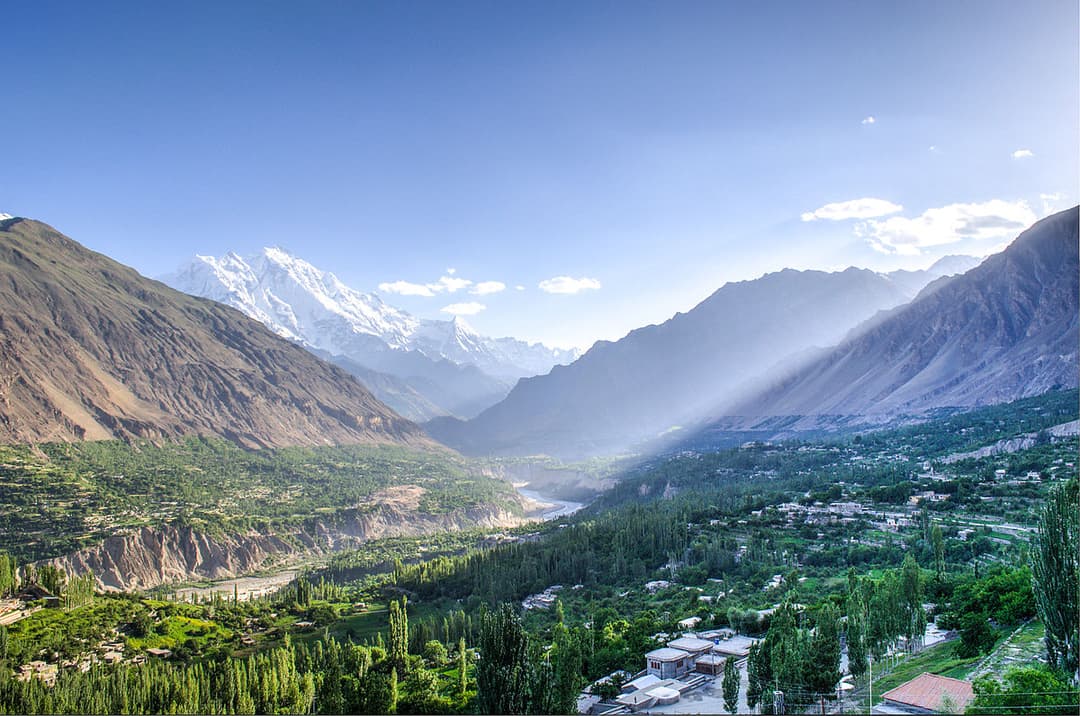
Gilgit-Baltistan
Gilgit-Baltistan: The Land of Majestic Mountains and Serenity
Gilgit-Baltistan (GB) is a region of unparalleled natural beauty, located in the northernmost part of Pakistan. Surrounded by some of the world’s highest peaks, including K2, the second-highest mountain on Earth, Gilgit-Baltistan is a haven for adventure seekers and nature lovers. Known for its rugged terrain, clear rivers, lush green valleys, and pristine lakes, this region is a place where serenity meets grandeur.
A Region of Scenic Wonders
Gilgit-Baltistan is home to some of the most spectacular landscapes in the world. The region features awe-inspiring mountain ranges such as the Karakoram, the Himalayas, and the Hindu Kush, making it a prime destination for mountaineers, trekkers, and photographers. The valleys of Gilgit, Hunza, Nagar, and Skardu are especially renowned for their breathtaking beauty and tranquility.
Hunza Valley: Often referred to as the "Heaven on Earth," Hunza Valley is famous for its picturesque landscapes, charming villages, and the warm hospitality of its people. The valley is framed by towering mountains, including Rakaposhi and Ultar Sar, and is a perfect spot for hiking, photography, and cultural exploration.
Skardu Valley: Skardu is known for its majestic lakes such as Shangrila Resort and Satpara Lake, as well as for trekking opportunities to some of the world’s most famous mountain peaks.
Fairy Meadows: This lush meadow near Nanga Parbat, the ninth-highest mountain, is a must-visit destination for those seeking adventure and breathtaking views of towering snow-capped peaks.
A Historical and Cultural Heritage
Gilgit-Baltistan has a rich cultural and historical heritage shaped by various civilizations over the centuries. The region has been influenced by Buddhist, Persian, and Central Asian cultures, and remnants of these civilizations can still be seen today.
Buddhist Art and Architecture: The region is home to ancient Buddhist monasteries, stupas, and rock carvings, such as the famous carvings at the Usho and Manthal Buddha Rock. These artifacts reflect the importance of Buddhism in the region’s past.
Hunza Fort and Baltit Fort: These centuries-old forts in Hunza offer a glimpse into the region’s medieval history and serve as symbols of the area’s cultural heritage.
Adventure and Exploration
For those seeking adventure, Gilgit-Baltistan offers a range of outdoor activities, including trekking, mountaineering, and river rafting. The region is home to some of the world’s most famous trekking routes, such as the trek to the base camp of K2, one of the highest and most challenging mountains in the world.
The clear rivers, including the Indus River, also offer opportunities for white-water rafting, adding to the thrill for those with an adventurous spirit.
A Unique Blend of People and Culture
Gilgit-Baltistan is known for its diverse population, which consists of various ethnic groups, including Baltis, Shinas, Hunzakuts, and Ismailis. The people of this region are known for their friendliness, hospitality, and strong sense of community.
The culture of Gilgit-Baltistan is a mix of various traditions, including Persian, Tibetan, and Central Asian influences. The region’s music, dance, and festivals reflect this rich cultural diversity. Traditional music is often accompanied by the dhol and rubab, while festivals like Nauroze and Eid are celebrated with great enthusiasm.
The Serenity of the Lakes
Gilgit-Baltistan is home to several serene and crystal-clear lakes that add to the region’s natural charm. These lakes are not only scenic but also provide tranquil spots for relaxation and reflection.
Attabad Lake: Formed by a landslide in 2010, Attabad Lake is a stunning turquoise lake surrounded by dramatic mountains.
Shangrila Resort: Also known as Lower Kachura Lake, this serene lake near Skardu is famous for its beauty and tranquility.
Satpara Lake: A picturesque high-altitude lake in Skardu, offering spectacular views of the surrounding mountains.
A Region of Peace and Sustainability
While Gilgit-Baltistan is known for its rugged beauty and adventurous terrain, it is also a region that values peace and sustainability. The people of the region live in harmony with nature, and conservation efforts are essential in maintaining the fragile ecosystem. The region’s natural resources, including water, forests, and biodiversity, are carefully managed to preserve its pristine environment.
A Land of Endless Possibilities
Gilgit-Baltistan is a land of opportunities, both for tourism and development. As one of Pakistan’s most scenic and untouched regions, it holds great potential for tourism-related ventures, eco-tourism, and sustainable development. The government has taken steps to improve infrastructure, making the region more accessible to travelers from around the world.
A Journey Through Gilgit-Baltistan
Gilgit-Baltistan is not just a place to visit; it is a journey into the heart of nature and adventure. From the towering peaks of K2 to the peaceful shores of Attabad Lake, the region offers an experience that is both thrilling and soul-stirring.
Visiting Gilgit-Baltistan is a once-in-a-lifetime opportunity to explore one of the world’s most stunning and remote destinations—a land where nature’s beauty meets human resilience, offering an unforgettable experience.